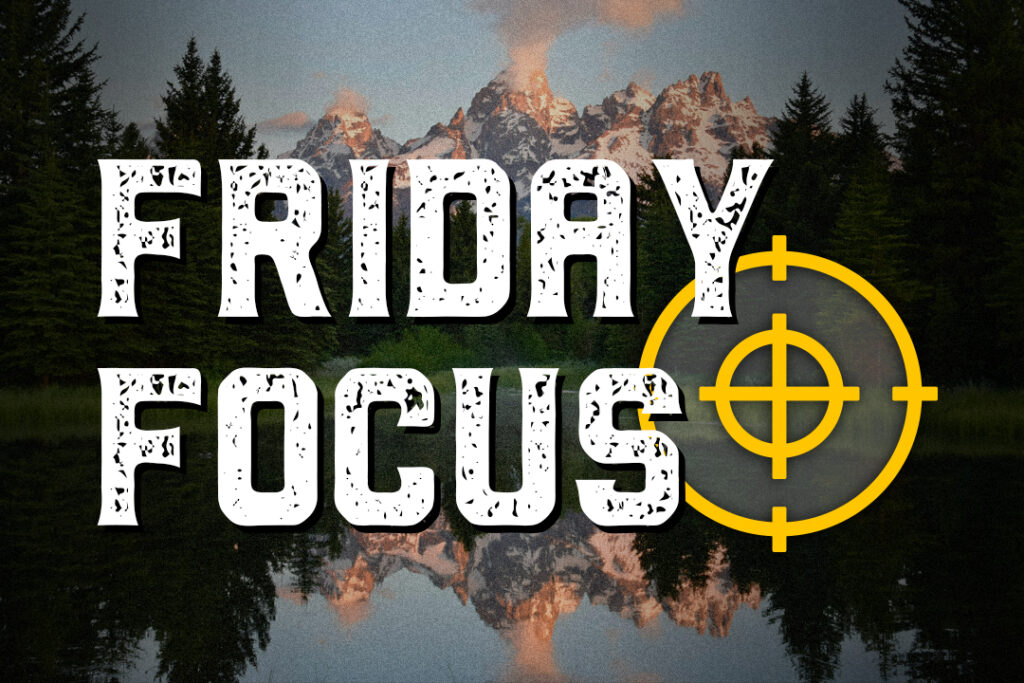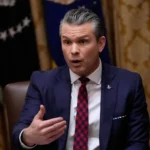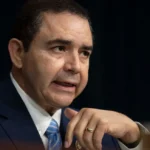FRIDAY FOCUS: State of Medical Services in Wyoming ‘Tenuous,’ Says Top Health Care Official (Part 1)
Eric Boley explains the challenges of the post-COVID landscape, worker shortages and budget woes
- Published In: Other News & Features
- Last Updated: Jun 30, 2023

Eric Boley, president of the Wyoming Hospital Association, said there are six or seven hospitals in Wyoming with only “10 days of cash on hand.” (Courtesy photo from the Wyoming Hospital Association)

By David Dudley
Special to the Wyoming Truth
In the past three years, the world of health care has become totally unrecognizable. At least that’s what Eric Boley, president of the Wyoming Hospital Association (WHA), a nonprofit organization representing 35 hospitals, says.
Though he’s been in the health care business for three decades, Boley is continually faced with new problems. Many of them were born during the pandemic—and he’s still wrestling with ways to solve them three years later.
“The degree of distrust that the average person has for health care professionals and facilities is baffling,” he said. “Rhetoric around health care issues has become more volatile. Because of that, it’s harder to find the middle ground we need for compromise, and so funding.”
Boley graduated from Weber State University in Utah with a bachelor’s degree in business administration in 1992. Shortly thereafter, he joined the South Lincoln Medical Center in Kemmerer, where he was business office manager, then CEO, during his 20-year tenure. That’s also where he got his first taste of large-scale success.
“We were able to fund and build the South Lincoln Nursing Home that was badly needed in our community,” he said. “When I left Kemmerer, the hospital was solvent and flourishing. We’d added a lot of services. We’d really built something special in that community.”
But that was before the pandemic. And that was before waves of inflation rocked the economy, leaving budget crunches in their wake.
It should come as no surprise, then, that when Boley was asked about the last time he felt fear, he replied “[during] the last legislative session.”
And when asked to use one word to describe the state of health care in Wyoming, Boley fell silent.
“Tenuous,” Boley said, finally.
Currently, Banner is the sole health care system operating multiple hospitals in Wyoming, but some hospitals have affiliate agreements with University of Colorado Health, Billings Clinic and Quorum, Boley said.
There are 16 Critical Access Hospitals — facilities that provide health care services to rural, often underserved communities — in Wyoming. And there also are 34 Federally Qualified Medical Centers — community-based organizations that provide comprehensive primary and preventive care, including dental and mental health/substance abuse services, regardless of a patient’s ability to pay or health insurance status.
Many of them are at risk. According to Boley, there are six or seven hospitals in Wyoming with only “10 days of cash on hand.”
“These hospitals are dangerously close to falling off a financial cliff,” he said. “We’d like to see around 160 days of cash on hand. If those communities lose their hospitals, many of which are rural, they’ll have to travel greater distances to get care. Due to road closures, that isn’t always possible.”
Boley spoke with the Wyoming Truth about the challenges the state faces; what the failure of Medicaid expansion means for providers, facilities and citizens; and what the future of health care in Wyoming may hold. What follows are excerpts from part one of the conversation.
Why did you feel fear during the last legislative session?
Boley: I have some real concerns and fears for some of our hospitals and nursing homes in the state. I always worry about failure, so I always have fears about failure and push myself to do my best.
But, the legislative session always brings fear and trepidation.
What about this last session stirs up that fear and trepidation?
Boley: It’s just the last few sessions have been very contentious and difficult, as we’ve navigated our way through the pandemic. As we’ve seen turnover in the Legislature, we need to re-educate lawmakers and help staff with learning curves.
I almost always feel fear about funding for our hospitals and nursing homes. What that might look like next year, and how we can keep ’em solvent.
What kinds of challenges have cropped up for health care practitioners?
Boley: It has been a tough three years, honestly. Where masks and vaccinations are concerned, I feel that they [the Center for Disease Control], and we could have done a better job. But they were dealing with it on the fly. They weren’t prepared. Our country wasn’t prepared. The state wasn’t prepared.
The whole masking thing became a huge contentious issue in our Legislature. It really blew up for no reason. And then the vaccine mandate and vaccine issues. It’s kind of funny, and sad, where we’ve gone.
Early in the pandemic, hospitals and those who staffed them were heroes. Now, everybody’s mad at ’em again. It’s funny how people’s memories fade so quickly and how things change so quickly.
You mentioned some of the new federal guidelines would impact health care in Wyoming. How so?
Boley: Well, regarding long-term care, they just came out with over 900 pages of new rules, rules of participation, from the federal level.
Can you point to one of those rules that’s of particular concern?
Boley: The Biden administration is set to put staffing ratios in place, staffing minimums, for long-term care which we expect will probably force some nursing homes to close because there isn’t enough staff. Or those new rules will put ’em in even worse condition. Right now, our nursing homes are running at 60% occupancy, because they can’t staff them. It’s not because there isn’t enough demand of patients needing that care, but they don’t have enough staff. And if you put these staffing ratios in place, it’s gonna cripple ’em.
To make matters worse, when you look at our aging population, I think we’re gonna be the second-oldest state in the U.S. within the next year or two. Then very few younger people are coming here to join the workforce.
What about hospitals? How are they faring?
Boley: On the hospital side, you know, we’ve got all kinds of transparency rules and regulations that are rolling out. We’ve got pushes right now for site-neutral payments, which would basically level the playing field no matter what type of facility you run. Everyone would get paid the lowest amount, which would cripple hospitals.
What does that mean, specifically for hospitals?
Boley: Hospitals that have more than 10% of their market made up of Medicaid patients get an additional payment to help make up for the losses they incur by caring for that demographic. Right now, Congress is looking at cutting a lot of those programs that really help keep hospitals on firm financial ground. So it’s tough times. I haven’t seen it like this in the 30 years I’ve been in the industry.
That’s at the federal level. What’s happening at the state level?
Boley: Financing is constantly a worry.
How do hospitals end up with only 10 days of cash on hand?
Boley: That’s a great question. There are many different circumstances that lead to that. Some of them run into cash flow issues. They go through an electronic health record or conversions for their systems, which leads to delays in getting paid. We’ve seen it take six to eight months to be able to bill in some cases.
Normally, cash is king. So, if you’re going eight months without billing, you end up eating through your reserves because you don’t have any cash coming in. Then it also takes a while to start collecting.
Other hospitals had their reserves sucked out of ’em during the pandemic. Some even quit doing elective procedures. Outpatient procedures are pretty much one of the only areas where hospitals make money. And they quit doing those for over a year.
Check back for part 2, coming soon.













